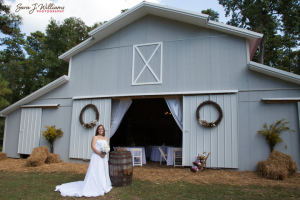Although it is the least expensive and most durable of all sidings not everyone desires steel panels. Whether for aesthetic purposes to match other structures, or restrictions on sidings, some pole building owners are just looking for an alternative.
 Engineered wood siding and trim (EWST) is perhaps the most affordable of all wood siding options. It is made from wood castoffs, such as sawdust and held together with bonding agents. It can be painted almost any color, or factory applied finishes are also available. Because it is manufactured by machine, there are no imperfections, unlike real wood.
Engineered wood siding and trim (EWST) is perhaps the most affordable of all wood siding options. It is made from wood castoffs, such as sawdust and held together with bonding agents. It can be painted almost any color, or factory applied finishes are also available. Because it is manufactured by machine, there are no imperfections, unlike real wood.
These categories of composite panels have been designed and manufactured to perform in exterior exposure applications with the appearance of traditional wood. These advanced composites can be engineered with enhanced resistance to moisture, dimensional stability and protection against fungal decay and termites.
The engineered properties translate into long-lasting durability allowing for decades of service life while maintaining their attractive appearance. Today’s engineered wood siding and trim products are highly versatile and come in many forms including sophisticated wood grains and embossed finishes.
The American National Standard for Hardboard Siding (ANSI A135.6), now referred to as the Engineered Wood Siding Standard, covers requirements and methods of testing for exterior durability, dimensions, straightness, squareness, physical properties and surface characteristics. It also includes trade terms and methods of identifying engineered wood siding. Third-party certification to the ANSI Standards is required for many applications of siding panels. Many building permit jurisdictions require the physical properties of engineered wood siding to be third-party certified.
In the 70’s, I worked for a contractor and installed what felt like miles of Masonite® siding. Also known as cardboard, hardboard, or clapboard, is was then the primary siding used in low priced construction throughout the United States. Masonite® siding is made of wood chips held together with glue, resin and wax. When the siding is manufactured, a combination of heat and pressure is used to consolidate the wood fibers with the other products, resulting in a dense board with a smooth finish.
The biggest benefit to Masonite® siding is its price. It is less expensive than vinyl, solid wood and fiber cement siding. This type of siding must be installed properly, however, or it will be subject to rot and other problems; if not installed according to the manufacturer’s exact specifications, any warranty on the product may be invalid. Although the siding may be less expensive initially, it will cost more in the long run if it has to be replaced in just a few years.
Many people prefer Masonite® siding because it resembles real wood, without all the problems. The fact Masonite® is partially synthetic makes it less prone to insect infestations, such as termites and fire ants. It is also a green building material since it uses fewer trees during the manufacturing process.
There are a lot of options available with Masonite® siding. Masonite® can be purchased pre-stained, pre-primed and pre-painted. Many people prefer to avoid the whole painting process and buy the siding painted and ready to hang. For building owners who prefer the look of a specific wood, the hardboard siding is available in a variety of shades and textures.
Not everyone is a fan of Masonite® siding. During the 1980s and 90s, there were some problems with the siding, which included rot, discoloration, blistering and deterioration. The Masonite Corporation was taken to court in a class action lawsuit which resulted in a massive recall. It was determined the Masonite Corporation was creating boards which weren’t properly compressed or installed.
The use of Masonite® has bounced back since the recall and the siding is holding up according to what is expected. It is more commonly referred to as hardboard siding so it is not associated with the Masonite Corporation, since the company has since ceased the production of this type of siding.
In comparison to other siding materials, Masonite® has a short life span of eight to ten years. If properly maintained with paint and caulking, it can last a lot longer. Improper installation can shorten this time frame significantly, resulting in buckling, rotting, softening, blistering and swelling. If left to deteriorate, it can result in damage to the structure of the building, including permanent mildew, indoor leaks and buildup of toxic molds.
LP SmartSide is now the general engineered wood siding of choice. Among the available options in lap sidings are six, eight and 12 inch (in either smooth or textured), 12” x 48” reversible shake; 12” Triple 4”; 12” Double 5” Bold; Random Shake; six and eight inch “Prairie Wheat”; as well as Dutchlap Double five and eight inch or Triple 4”. Panels are available either non-grooved, or with grooves four or eight inches on center, as well as in a stucco pattern.
The total average cost per square foot (not including installation) is approximately $1.50-$2.25. Since engineered wood siding is made from synthetic materials and wood castoff, there is no specific type of wood used.
The advantages of EWST are low cost, it lasts 20 to 30 years, it looks like real wood, it can be painted almost any color and it usually comes pre-treated with resin to prevent mildew, termites and fungus. The disadvantages are it is not as unique and authentic as real wood and cutting can be a challenge






